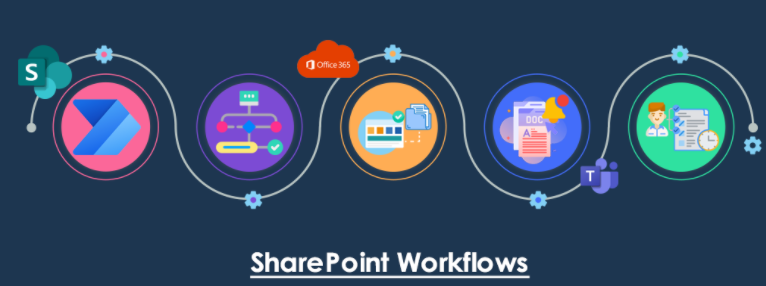At the beginning of July, Microsoft announced that as of August 1st, 2020, no more SharePoint 2010 workflows can be created in new tenants. However, it is much more important that from November 1st, 2020 already implemented SharePoint 2010 workflows can no longer be used in SharePoint Online. The same path is emerging for SharePoint 2013 workflows. Therefore, check your migration options in good time.
A few weeks ago, Microsoft announced that business users should use modern workflow solutions in the future in order to be able to design workflows easily and flexibly. Manual migration to the Power Automate environment is recommended for classic workflows that have already been created with SharePoint Designer 2010 or SharePoint Designer 2013 based on the SharePoint Workflow Engine 2010 and supported by InfoPath Designer 2013. Below you will find tips on how to proceed with the workflow migration.
Find SharePoint 2010 or 2013 workflows and check compatibility
If you are not sure whether and how many old SharePoint workflows (in short: SP workflows) are used in your organization, Microsoft offers a simple way to scan your SharePoint environment with the “SharePoint Modernization Scanner” tool review the use of legacy workflows. This indicates the distribution of legacy workflows in SharePoint 2010 and SharePoint 2013, as well as the distribution of built-in and custom workflow usage. In addition, the workflows for websites and lists are displayed. The tool is also particularly advantageous because it tells you directly in the report to what extent the recognized workflows can be transferred to Power Automate. Also, the report will output the count and list of actions that are not compatible with Power Automate. This tool can also be used to verify that InfoPath has been used on your environment.
SharePoint 2010 Workflows: Migrate to Power Automate or ARC
If Microsoft’s announcement also affects your working environment, the question arises as to how a migration or redesign of the existing workflow processes can be carried out. Especially since there is no separate tool to make the transition easier for you. In the case of a migration, any structural differences must also be taken into account:
- Different maximum runtimes of the workflows
- Missing impersonation functionality in Power Automate
- License differences for using HTTP connectors as an action
- Creation of reusable workflows and site workflows in Power Automate not given
Net at Work GmbH supports the professional migration of your SharePoint 2010 workflows. Traditional workflows are optimized, the structural differences between the two engines are pointed out and workarounds are worked out together with you.
Power Automate as an alternative
With the Cloud Engine Power Automate, Microsoft has developed a recommended alternative solution for the SharePoint Designer. As a business user, you may also be wondering how you can benefit from moving to the newer workflow engine. Power Automate stands out above all with its simplicity. Simple applications can also be designed by employees without a technical background. Multiple templates help customize business solutions to automate your day-to-day work. If you have any questions, a large number of tutorials and information sheets are available. Workflows where specific triggers should be used (e.g. user-defined sending of e-mails when creating new SharePoint list elements or starting approval processes when creating new files) can be implemented particularly well. Net at Work uses the simplicity of the Cloud Engine as a basis and carries out a migration or new development.
Process orientation or automation
For each individual case, we check whether a migration to Power Automate or to the business application platform ARC is advisable. With the benefits of Power Automate come limitations that may not be acceptable in your use case. A quick look at the direct comparison between the specifics in Power workflows Automation and the alternative ARC can help in the decision-making process.
According to this, Power Automate is particularly suitable for simple and sequential workflows to be automated with a maximum runtime of 30 days. If the scenarios are more complex and multi-layered (e.g. with multi-level approval workflows), Al Rafay Consulting “ARC” can be a suitable alternative.




